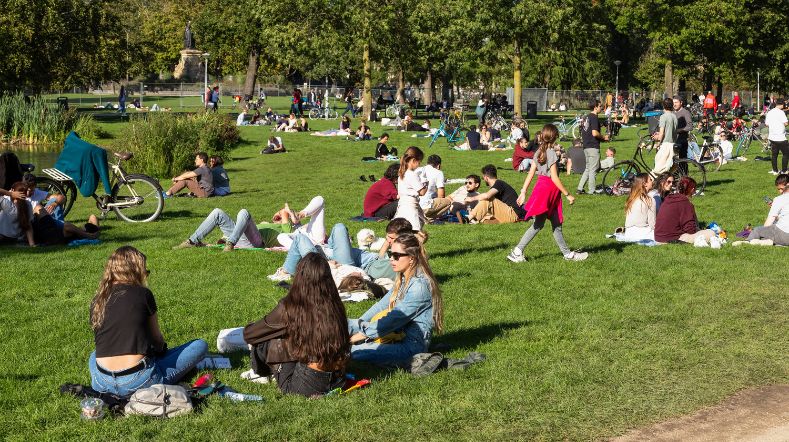Group of households with fuel cars vulnerable in transition to sustainable mobility
Between 113 and 270 thousand households in the Netherlands have low incomes and high fuel costs. Most of these are in medium-sized cities. This group of "at-risk" households is vulnerable to tax measures and other policies that steer more sustainable mobility behavior. Lowering excise tax is not a cost-effective measure to help these households because 98% of it does not reach the most vulnerable households.
TNO examined, on the basis of previously uncombined microdata*, how many households in the Netherlands are potentially vulnerable to the mobility consequences of the energy transition**. In the study, TNO shows how many and which households in the Netherlands combine a low income with high car mileage, making them vulnerable to higher fuel costs, for example due to CO2 pricing.
This also examined the extent to which these households are dependent on their car, in the sense that their access to nearby public transport is limited. The financial capability of households was also taken into account, which helps determine whether these households would be financially able to purchase an electric car as an alternative to their fuel car.
Reason for study
"In the energy transition, the use of a fuel car is increasingly discouraged by regulations and pricing, think environmental zones in cities and higher fuel prices through environmental taxes. These measures are intended to reduce emissions but it is important to keep an eye out for households that cannot join the desired transition to sustainable transport on their own," said Peter Mulder, lead author of the study.
"This is because not all households have the same ability to respond to price incentives or other sustainability policies. If a household is car dependent and cannot purchase an electric car due to limited financial resources, then higher costs of a fuel car due to environmental measures lead to higher mobility costs. Especially for poorer households, this increases the likelihood of transportation poverty. That means they risk being unable to reach certain jobs, amenities and social relationships because of excessively high transportation costs," Mulder explained.
TNO report transport poverty Netherlands 2024
Download the executive summary or view the full report (pdf) of "The Energy Transition and the Risk of Transportation Poverty (in Dutch).
Risk group includes between 113 and 270 thousand Dutch households
TNO's analysis shows that between 113 and 270 thousand households in the Netherlands have low income and high fuel costs. In this group, between 73 and 175 thousand households are extra vulnerable because they have low financial assets and limited access to open transportation. The exact number depends on the fuel price and the low income threshold used. On average, they consume about 40% more fuel than the average household with their own car. The cost of this is on average between 10% and 12% of the income of these households.
This so-called fuel ratio (fuel costs as a percentage of income) for all households averages 4.5%. About 60% to 70% of the at-risk group of poor households with a car are also energy poor in the sense that they live in a poorly insulated house with relatively high energy costs.

“The high fuel costs of these "at-risk" households with cars are primarily caused by high mileage. Our data shows that this is not only due to commuting; we see similar travel behavior among pensioners and people on benefits. More research is needed into the background of this.”
Who are these vulnerable households and where do they live?
The group of households, vulnerable to measures to promote sustainable mobility, includes relatively many families with children. One-parent households are especially overrepresented. The source of income of 'at-risk' households is relatively often benefits or pensions. 'At-risk' households with a car are more likely to live in medium-sized cities than in rural areas, and are mainly located on the southeastern edge of the Netherlands, including in the region of Venlo, Enschede and Zevenaar, in the area in the line Bergen op Zoom - Oss and in several metropolitan districts of Rotterdam and Almere.
Impact excise tax reduction
The government implemented an excise tax reduction between April 2022 and July 2023 due to high fuel prices. A simulation shows that the identified group of 'at risk' households, due to their high mileage, would have received approximately 260 to 300 euros in excise duty reduction on an annual basis, compared to an average of 185 euros for other households with a car.
Peter Mulder: "Due to the fact that they drive a lot of kilometers, the 'at-risk' households with a car benefited greatly from this tax reduction. But because only a few percent of all households belong to this vulnerable group, about 98% of the cost of this measure benefits less or non-vulnerable households. The latter group spends on average less than 4% of their income on fuel. Thus, an excise tax cut for all is an inefficient and expensive way to help a relatively small group of vulnerable households."
Conclusions
The TNO study shows that a group of low-income car owners risks being hit disproportionately hard by sustainable mobility policies. To prevent these people from facing a mobility problem due to rising mobility costs, it is a good idea to consider new forms of transport policy. Generic (fiscal) compensation measures such as an excise tax reduction are not a cost-effective route to reduce the risk of transport poverty. "This is due to the specific characteristics of this group and their relatively small size. Policies aimed at enabling more intensive use of alternative means of transport such as electric bicycles, shared transport and public transport seem more promising, especially since the majority of 'at risk' households live in urban areas, but more research is needed to make concrete statements on this," Mulder points out.
"Finally, our study also gives reason to take a closer look at planned locations of new housing developments: are sufficient jobs and amenities accessible from those locations without depending on the car? Especially for groups with lower incomes, this question is becoming increasingly important in the energy transition."
Get inspired
Public trust in nuclear energy requires an adaptive policy approach


Small modular reactors in the Dutch energy system - Combined heat and power production in industry


Scenarios for a climate-neutral energy system


Energy transition growing cooperation between government and industry


Preventing energy poverty


